
Beyond Shakespeare: A Reading List
Plenty to Read in One of the Greatest Literary Moments in History
There is some sort of literary law of physics which says that sooner or later, in any piece about William Shakespeare, the author is going to refer to the dramatist as “The Bard.” Technically speaking this article isn’t even about Shakespeare—it’s about those who are “Other Than Shakespeare”—and yet I felt the need to get the designation of “Bard” out of the way early. Of course it speaks to the central place that “The Bard” has played in Anglophone culture that we refer to him as such; there is no other author of poetry, prose, or drama, who occupies so central a place in the literary universe of the English-speaking peoples. Arguably no foreign-language writers loom as large in their respective tongues either (not even Dante for the Italians).
Shakespeare’s canonization happened relatively quickly after his death 400 years ago on April 23rd. It was only seven years later that his friends (and hanger-on’s) released the landmark first folio, containing the 36 plays of his which would become not just representative of the English Renaissance stage, but indeed exemplary embodiments of English drama performed on any stage, in any century. Indeed from the printing of that first folio there would be three more subsequent revised editions in the 17th-century, with an anonymous lyric in the second edition of 1632 describing the reaction to Shakespeare’s achievements and posterity: “Thou in our wonder and astonishment / Hast built thyself a live-long monument.” The author of that poem was a young upstart who would also acquire a bit of a reputation for literary brilliance, an author by the name of John Milton.
This was one hell of an era. Shakespeare and Milton. And Marlowe? Ben Jonson? What about John Donne? As a scholar of English Renaissance literature I am a bit biased, but I would argue that no century until the 20th saw such an equal flowering of English-language drama, prose, and poetry. The 16th century saw the emergence of blank-verse and the secular theater, a period marked by the “mighty line” of Marlowe thundering out of the mouth of characters like Tamburlaine and Dr. Faustus (and of course Shakespeare’s Hamlet and Lady Macbeth). The 17th century first sees the crystalline beauty and ingenuity of metaphysical verse in the poems of John Donne and George Herbert. And (depending on who is doing the answering) we see the rudimentary origins of that supreme engine of empathy, that machine for inhabiting the interiority of another person, the novel.
But we see other remarkable things as well, such as the first published women authors, or the emergence of science fiction as a genre, and the development of exotic dramatic genres with designations like “Pirate Play,” or “Revenge Tragedy.” There are of course convincing reasons for why Shakespeare (or Milton, or Marlowe, or Jonson, or Donne) have the reputation that they do, but sometimes “Bardolatry” can obscure just how dynamic and exciting a literary era early modern England was. For every new film adaptation of The Tempest or Richard III there is a missed opportunity to see the domestic horror of the anonymous play Arden of Faversham, or the political machinations of A Game at Chess. Scholars have done the important work of promoting, studying, teaching, and of course reading the many women authors of the period ever since Virginia Wolf posited her thought-experiment about “Shakespeare’s Sister,” reclaiming the strange and wonderful “paper bodies” (as she called her books) of Margaret Cavendish, or resuscitating some of the first novels in English by Aphra Behn.
Certainly my examples would not be unfamiliar to any specialist in 16th- and 17th-century literature. Because of the determination of these scholars, texts such as these have filled the syllabi of undergraduate survey courses. And yet for the general public the far-reaching shadow of Shakespeare can obscure even Milton and Marlowe, not to speak of writers from Thomas Nash to Thomas Middleton. What follows is an unscientific, unrepresentative, extremely subjective and idiosyncratic list of more “marginal” (which of course depends on the audience) authors and texts from the English Renaissance which have been recently republished in modern editions and are available to the general reading public.
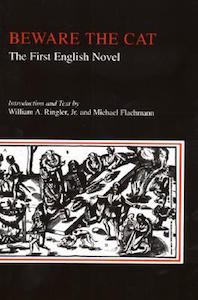 Beware the Cat by William Baldwin (1561)
Beware the Cat by William Baldwin (1561)
What could be considered the first English-language novel (and certainly its first horror novel) is a weird little book that for most of its history was better known among typographers for the quality of its black-letter printing than it was among literary scholars. Modern readers should give the 1988 edition (the only one in print) a read, inside of its pages they’ll discover Grimalkin, queen of the talking cats, a werewolf, and a dose of standard anti-popishness, all served up with a dollop of winking, meta-fictional commentary that almost seems post-modern in its awareness.
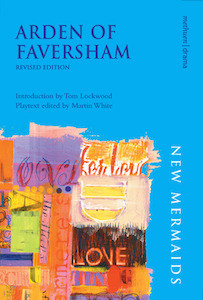 Arden of Faversham by Unknown (1592)
Arden of Faversham by Unknown (1592)
Perhaps it is a bit of a dodge to include a play that was misattributed to Shakespeare (and which certainly references him, albeit in an unflattering light), but the domestic tragedy of Arden was the Gone Girl of the Elizabethan stage. Though it is sometimes staged in the contemporary theater (notably a 2010 production at the archeological ruins of the Rose Theatre in London), this play doesn’t have the audience it deserves. In a manner that seems to call forth the grittiness of modern true-crime writing (as indeed it was based in fact), Arden presents us with a conspiracy at the hands of a woman and her working class lover to murder her successful husband, who lives among the bare-ruined choirs of a monastery stripped during the Reformation. The image of bloody footprints in the fresh snow remains chillingly visceral.
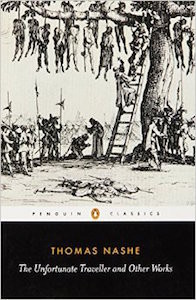 The Unfortunate Traveller by Thomas Nashe (1594)
The Unfortunate Traveller by Thomas Nashe (1594)
Some identify The Unfortunate Traveller as the first English novel; it is certainly the greatest one which you have never heard of. Thomas Nashe was of that first generation of grubby writers for pay, and he made his bank in everything from writing for the theater to penning ghost-written religious pamphlets on behalf of the Church of England and compiling dictionaries of canting among the lower classes of London. His novel functions as a type of early modern road novel, a picaresque involving a one Jack Wilton as he and the historical poet Henry Howard journey through a Europe devastated by religious war. Along the way they encounter a litany of events and figures, from the survivors of the siege at Munster where radical Anabaptists had instated a communistic theocracy, to the libraries of Thomas More and Erasmus, and the political intrigue at the courts of the Italian Renaissance. The last setting is where Wilton is witness to one nobleman forcing another at gunpoint to pray to Satan, which when successfully achieved the former executes the later, thus condemning him to hell. The scene is as cold-blooded as anything you’ll ever read.
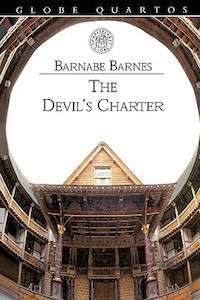 The Devil’s Charter by Barnabe Barnes (1607)
The Devil’s Charter by Barnabe Barnes (1607)
Audiences seem to perennially find Renaissance history to be sexy. From Showtimes television like The Tudors and The Borgias, to the perhaps more sober vision of Hilary Mantel in Wolf Hall (and its attendant Masterpiece Theatre adaptation), the time period is synonymous with Machiavellian intrigue, power-plays, and deviant sexuality. House of Cards seems like amateur hour when compared to the conspiracies of the early modern stage. Barnes’ Faustian play takes the then familiar story of the infamous Borgia pope Alexander VI, and identifies a deal with the devil as the origin of his ecclesiastical power (alongside murder, incest, and in the actual history, one hell of a party called “The Banquet of Chestnuts”).
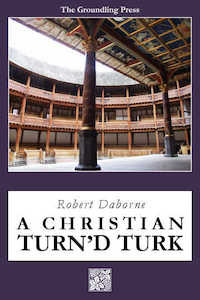 A Christian Turn’d Turk by Richard Daborne (1612)
A Christian Turn’d Turk by Richard Daborne (1612)
Of course Rome wasn’t the only foreign potentate English Protestant audiences feared; Istanbul was further to the east but in many ways loomed just as large. Daborne’s text is part of an unlikely genre called the “pirate play,” which rather predictably has piracy as some element of its plot. The genre is not as obscure as it first sounds, after all Hamlet is in some sense a pirate play. A Christian Turn’d Turk is also appropriately enough a “Turk play,” that is a performance which takes some element of (or projection about) Islam as a theme. Renaissance England was not unfamiliar with Islam as an exotic cipher for their fears about the unfamiliar, but London was home to a consul for Morocco, and those living unprotected on the coasts of England and Ireland (indeed as far north as Iceland) had being kidnapped into slavery by the fearsome Barbary Coast pirates. Many of the enslaved converted to Islam (or “turn’d Turk”) to gain emancipation, a phenomenon which horrified English society. Indeed Daborne’s play takes one such historical unfortunate, Jack Ward aka Yusef Reis as its subject. Ward terrorized the coasts of his former homeland, and indeed Daborne has him die a gruesome death on the Southwark stage, even while the actual pirate would gently expire surrounded by oriental opulence in his Tunisian estate eleven years after opening night. But the play is shot-through with a certain ambivalence, as working-class audiences may have cheered one of their own finally getting one over on the aristocracy, as indeed Ward was a sort of anti-hero of broadsheet and ballad.
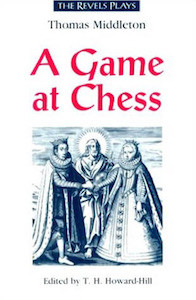 A Game at Chess by Thomas Middleton (1624)
A Game at Chess by Thomas Middleton (1624)
No play was as popular on the early modern stage as Middleton’s A Game at Chess. A satirical allegory that represents the international diplomacy between England and Spain over a proposed nuptial arrangement between Prince Charles and the infanta Maria as a game of political chess. The work was performed for nine sold-out nights in a row before Middleton—no slouch on the early modern stage—was arrested for violating the prohibition of depicting living monarchs in his too thinly veiled portrayals of James I and Philip IV. Audiences were scandalized by not just the diplomatic jousting, but by the almost proto-gothic portrayals of a heavily slandered Spanish Catholicism. After he ran afoul of the Privy Council Middleton would never write another play again.
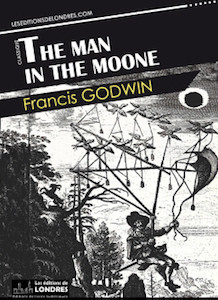 The Man in the Moone by Francis Godwin (1638)
The Man in the Moone by Francis Godwin (1638)
Another proto-novel, this one penned by an English bishop who absorbed all of the new astronomy of Copernicus, Kepler, and Galileo to generate the first science fiction text in the English language. Godwin follows the travels and exploits of Diego Gonsales as he travels to the moon in a craft held aloft by a flock of geese. Godwin was the first to hypothesize weightlessness in outer space, a correct assertion even if his reasoning was less than scientific. Along the way Gonsales travels among the utopian Lunar people of the moon, before journeying back to Earth and arriving in a country depicted almost as fantastically, called Japan. Godwin’s satirical fantasy would prove a formative text for a later writer named Jonathan Swift, who was inspired to write a book of no small renown entitled Gulliver’s Travels after reading The Ma in the Moone.
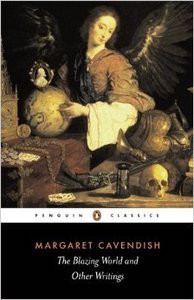 The Blazing World by Margaret Cavendish (1666)
The Blazing World by Margaret Cavendish (1666)
An iconoclastic genius and woman of independent means, Cavendish was wealthy enough that the chauvinists in the Royal Society couldn’t afford to keep the scientifically minded woman out. Writing at the outset of the scientific revolution, Cavendish also blazed a path in early science fiction with her brilliant, fantastical novel The Blazing World. In it she posits an entrance to a series of parallel planets accessible at the North Pole, through which her roman a clef double (who ends up becoming Princess Margaret I) travels through. Along the way she meets universes ruled by sentient animals, including fish-men, bird-men, and even ant-men. In its psychedelic weirdness the novel acts as an alternative corrective to the hegemony of realism which would come to be associated with the novelistic form.
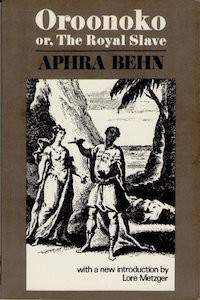 Oroonoko by Aphra Behn (1688)
Oroonoko by Aphra Behn (1688)
Virginia Woolf wrote of Behn that “All women together ought to let flowers fall upon the tomb of Aphra Behn… for it was she who earned them the right to speak their minds.” The first professional woman author in English, Behn was second only to her friend John Dryden in staged performances in the London theater. Her novel Oroonoko has enjoyed a modern resurgence in its poignant evocation of an African prince martyred as a slave in colonial Suriname, making one critic remark that it is in some sense the first American novel. A committed royalist, Behn’s Oroonoko is no simple noble savage, but rather a depiction of a monarch whose regency was violated by lesser men. Behn spent her youth in South America (from which she brought back woven Indian hammocks used in a production of Dryden’s The Indian Queen), and her novel acts as a lament for two events—the Glorious Revolution which removed her beloved Stuarts from the throne—and the terms of peace in the second Anglo-Dutch war which traded Suriname to Holland in exchange for what Behn thought was a worthless tract of land at the tip of Manhattan island.
Ed Simon
Ed Simon is the Public Humanities Special Faculty in the English Department of Carnegie Mellon University, a staff writer for Lit Hub, and the editor of Belt Magazine. His most recent book is Devil's Contract: The History of the Faustian Bargain, the first comprehensive, popular account of that subject.



















